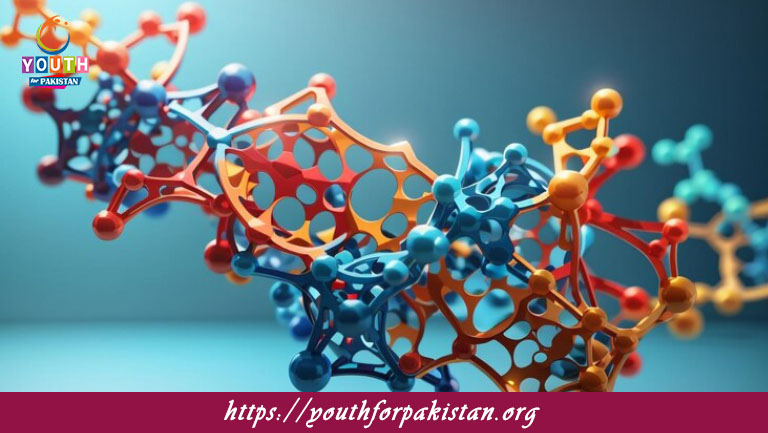Welcome to the Introduction/Characteristics Of Enzymes MDCAT MCQs with Answers. In this post, we have shared Introduction/Characteristics Of Enzymes Multiple Choice Questions and Answers for PMC MDCAT 2024. Each question in MDCAT Biology offers a chance to enhance your knowledge regarding Introduction/Characteristics Of Enzymes MCQs in this MDCAT Online Test.
Enzymes are generally made up of:
a) Carbohydrates
b) Lipids
c) Proteins
d) Nucleic acids
Enzymes act as:
a) Energy producers
b) Catalysts
c) Inhibitors
d) Substrates
The study of enzymes is known as:
a) Microbiology
b) Enzymology
c) Pharmacology
d) Pathology
Enzymes increase the rate of a chemical reaction by:
a) Consuming energy
b) Decreasing activation energy
c) Altering equilibrium
d) Increasing product concentration
Which of the following is a characteristic of enzymes?
a) They are used up in reactions
b) They work at very high temperatures
c) They are highly specific
d) They increase the activation energy
Which part of an enzyme binds to the substrate?
a) Allosteric site
b) Active site
c) Receptor site
d) Catalyst site
Which term describes enzymes that can function outside of a living cell?
a) Extracellular enzymes
b) Intracellular enzymes
c) Allosteric enzymes
d) Non-competitive enzymes
What type of enzyme inhibitor binds to the enzyme at a site other than the active site?
a) Competitive inhibitor
b) Non-competitive inhibitor
c) Allosteric inhibitor
d) Irreversible inhibitor
Most enzymes are composed of:
a) Lipids
b) Carbohydrates
c) Amino acids
d) Nucleotides
The term “apoenzyme” refers to:
a) The inactive form of an enzyme
b) The active form of an enzyme
c) A coenzyme
d) An inhibitor
Enzymes can be denatured by:
a) Low temperatures
b) High temperatures
c) Presence of substrates
d) Increasing product concentration
Which factor does not affect enzyme activity?
a) Temperature
b) pH
c) Substrate concentration
d) Product concentration
Enzymes function best at:
a) High temperatures only
b) Low pH values only
c) Optimum temperature and pH
d) Extreme pH values
Which enzyme breaks down proteins in the stomach?
a) Amylase
b) Pepsin
c) Lipase
d) Lactase
Coenzymes are:
a) Protein molecules
b) Non-protein organic molecules
c) Substrates
d) Allosteric inhibitors
Which term describes an enzyme’s ability to distinguish between different substrates?
a) Flexibility
b) Denaturation
c) Specificity
d) Saturation
Which of the following can act as a coenzyme?
a) Vitamins
b) Carbohydrates
c) Fats
d) Proteins
The substance that enzymes act upon is called the:
a) Product
b) Substrate
c) Cofactor
d) Catalyst
The temperature at which an enzyme works best is known as its:
a) Maximum temperature
b) Minimum temperature
c) Optimum temperature
d) Constant temperature
Which factor can result in the denaturation of an enzyme?
a) Substrate concentration
b) Optimal pH
c) Extreme heat
d) Presence of cofactors
Enzymes in the human body generally function best at a pH of:
a) 2
b) 4
c) 7
d) 9
An example of an enzyme that works outside the cell is:
a) Pepsin
b) DNA polymerase
c) ATP synthase
d) Trypsin
Which of the following statements about enzymes is incorrect?
a) They lower the activation energy of a reaction
b) They are consumed in the reaction
c) They are highly specific
d) They function best at optimal conditions
The suffix commonly used for enzymes is:
a) -ase
b) -ose
c) -ite
d) -one
Which enzyme is involved in the breakdown of fats?
a) Amylase
b) Lipase
c) Protease
d) Lactase
Enzymes that assist in breaking down carbohydrates are called:
a) Lipases
b) Proteases
c) Amylases
d) Hydrolases
Which of the following is an example of a cofactor?
a) ATP
b) Magnesium ion
c) Starch
d) Water
An enzyme’s function is dependent on its:
a) Size
b) Shape
c) Weight
d) Age
Which enzyme is responsible for the breakdown of lactose?
a) Lactase
b) Lipase
c) Maltase
d) Amylase
The lock-and-key model of enzyme action implies that:
a) Enzyme’s active site changes shape to fit the substrate
b) Substrate fits exactly into the enzyme’s active site
c) Enzyme is flexible
d) Active site binds loosely to substrate
Which factor does not affect enzyme activity?
a) Temperature
b) Substrate concentration
c) Product concentration
d) pH
The active form of an enzyme with its cofactor is called:
a) Apoenzyme
b) Holoenzyme
c) Coenzyme
d) Inhibitor
Enzyme activity increases with increasing temperature up to a point. What happens beyond that point?
a) The activity increases indefinitely
b) The enzyme becomes denatured
c) The activity remains constant
d) The enzyme becomes more effective
The rate of an enzyme-catalyzed reaction depends on the concentration of:
a) Water
b) Enzyme and substrate
c) Products
d) Inhibitors
Which enzyme is responsible for catalyzing the hydrolysis of starch?
a) Lipase
b) Protease
c) Amylase
d) Sucrase
What type of bond is formed between an enzyme and its substrate during catalysis?
a) Covalent bond
b) Hydrogen bond
c) Ionic bond
d) No bond is formed
Enzyme specificity refers to the:
a) Enzyme’s ability to catalyze only one specific reaction
b) Enzyme’s activity in all types of reactions
c) Enzyme’s ability to work under any condition
d) Enzyme’s ability to function in extreme environments
Enzymes lower activation energy by:
a) Increasing the energy of reactants
b) Bringing reactants into close proximity
c) Consuming energy
d) Altering products
Which of the following terms describes a molecule that binds to an enzyme and decreases its activity?
a) Substrate
b) Product
c) Inhibitor
d) Cofactor
If you are interested to enhance your knowledge regarding Physics, Chemistry, Computer, and Biology please click on the link of each category, you will be redirected to dedicated website for each category.








